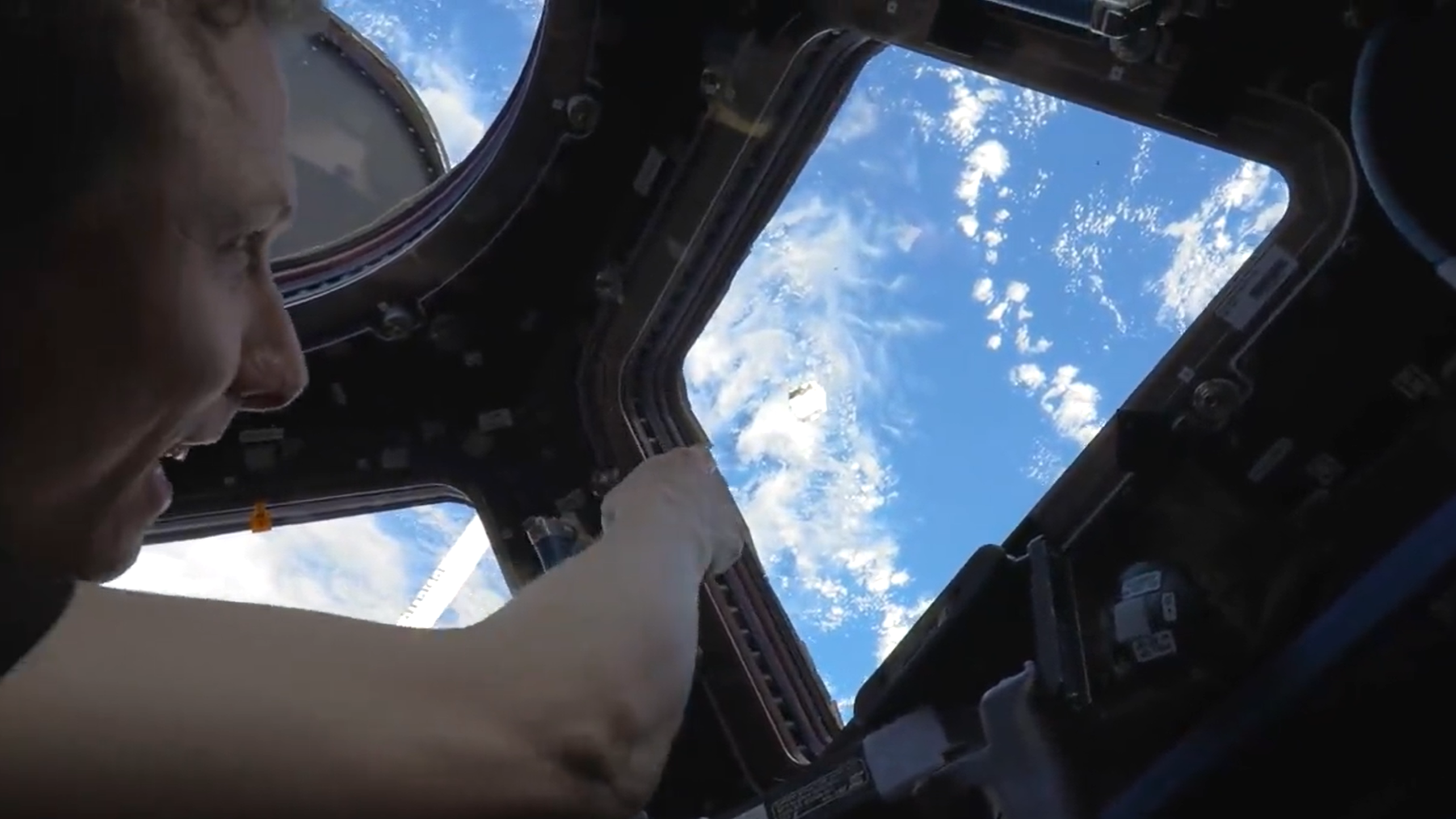
Taking out the trash on the International Space Station often requires a robotic helper, as a new video shows.
In the video, NASA astronaut Woody Hoburg shows off a cylindrical piece of space debris safely drifting toward Earth after being jettisoned by a Canadian robotic arm. The debris' path should have it fall into Earth's atmosphere in the summer of 2025, with no risk to the International Space Station.
"It's great to get rid of mass aboard the space station," Hoburg says in the video posted on Twitter, with the robotic Canadarm2 clearly visible behind him in a window. The debris, known as flight support equipment, was jettisoned moments before on July 3, when the video was filmed.
"This is pretty cool," Hoburg added of the equipment falling to Earth.
Related: How often does the International Space Station have to dodge space debris?

Hoburg said the ISS crew does its best to get rid of unneeded items ahead of periodic "reboosts," when an attached spacecraft raises the station's orbit to keep it from falling into Earth's atmosphere.
Molecules of our planet's atmosphere cause drag on the ISS at its altitude of roughly 250 miles (400 kilometers), requiring periodic adjustments to keep the 25-year-old complex flying.
"It's more efficient, propellant-wise, to have less mass up here," Hoburg said of the reboosts. He concluded the video with an enthusiastic thumbs-up.
The Flight Support Equipment (FSE) departs into the blackness of space. The @csa_asc robotic arm jettisoned it a month after it carried two @Space_Station Roll-Out Solar Arrays during their launch on @SpaceX CRS-28. A couple weeks ago I was crawling around the outside of that… pic.twitter.com/HvmRlM91PqJuly 10, 2023
The equipment jettisoned on July 3 is a leftover from a series of spacewalks conducted to install new solar arrays that will augment the ISS's power supply. Solar arrays naturally degrade over time, along with batteries. Crews of astronauts have therefore been installing new arrays and batteries, most recently on June 15.
The solar arrays came to space with flight support equipment, which Hoburg described as "a big metal bracket that they mounted [which] restrained them during their launch." (The restraint was needed to protect the arrays from the shaking and G-forces that rockets experience during launch.)

After launch, the equipment was mounted on a part of the space station known as a POA, or payload/orbital replacement unit accommodation. Simply put, POAs are convenient ISS parking spots for equipment in space awaiting installation, or jettison, as the case may be.
On July 3, Canadarm2 robotic controllers jettisoned the unneeded equipment from one of the facility's mission controls, under supervision from Hoburg. Hoburg didn't specify which facility did the work, but it's common for the Canadian Space Agency (with support from company MDA) to do such activities from its own mission control near Montreal.
This video isn't the only one Hoburg posted lately showing daily activities on the ISS. He recently showed off the typical tools that astronauts use during spacewalks, and also gave folks an excerpt of one of two daily planning conferences with Mission Control to figure out the needed activities in orbit.
Long-duration ISS crews typically spend about six months in space doing hundreds of science experiments. They receive flexible training that allows them to take on repair tasks, spacewalking, science and other orbital duties as required. Where possible, NASA emphasizes less task-specific training, as it's tough to predict what needs will arise on the orbiting complex during a half-year sojourn.
Hoburg was selected as an astronaut candidate in 2017 while leading an aeronautics and astronautics research group at the Massachusetts Institute of Technology. This is his first spaceflight.







